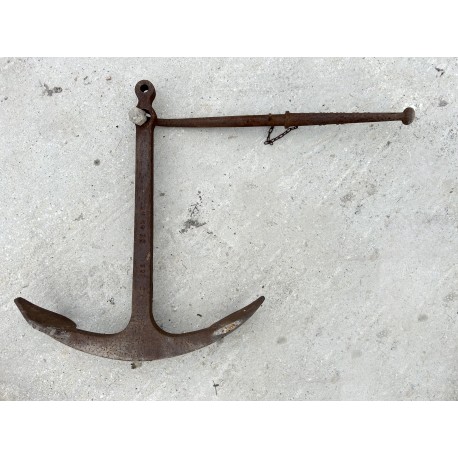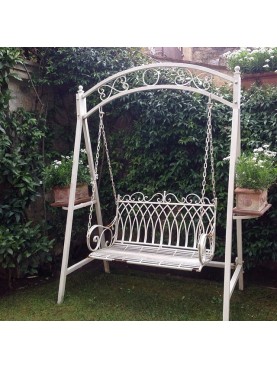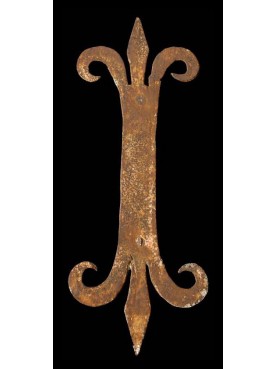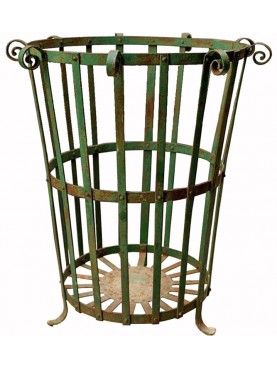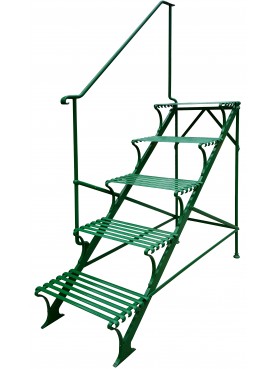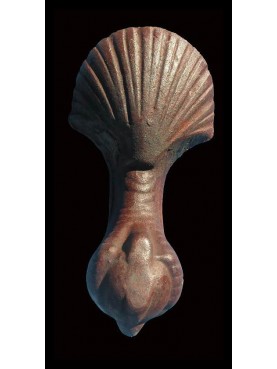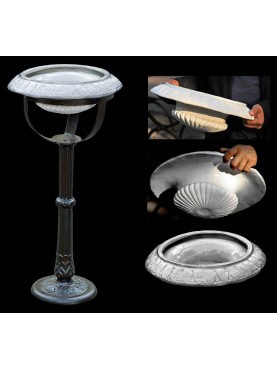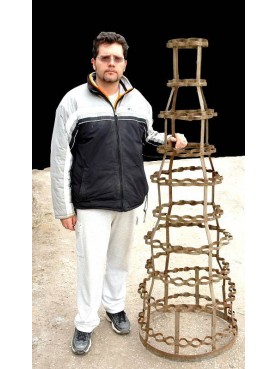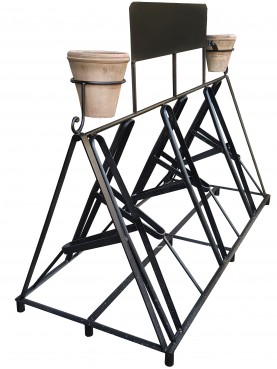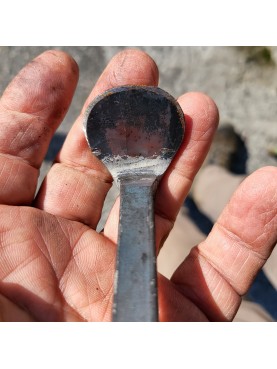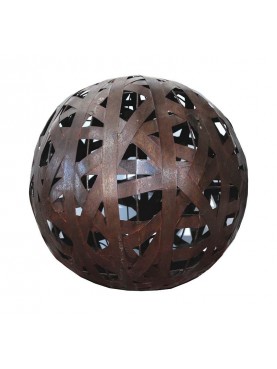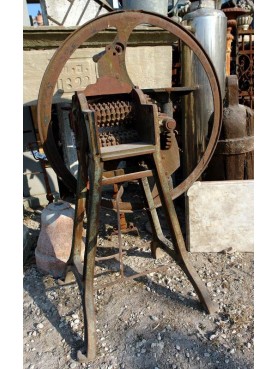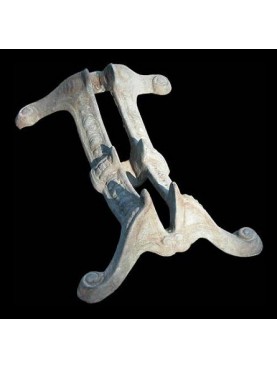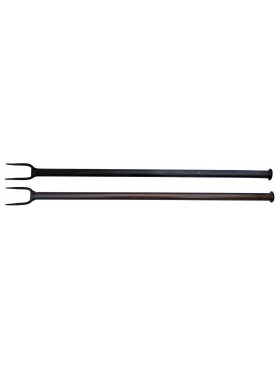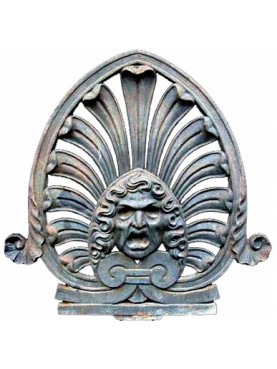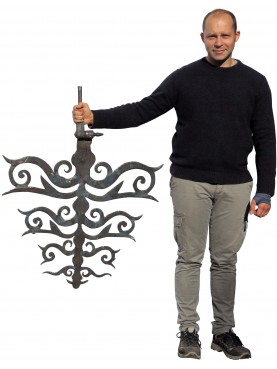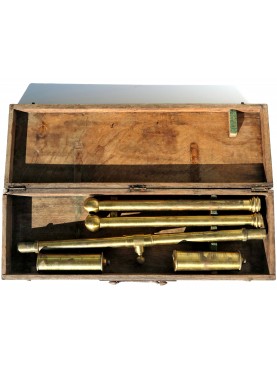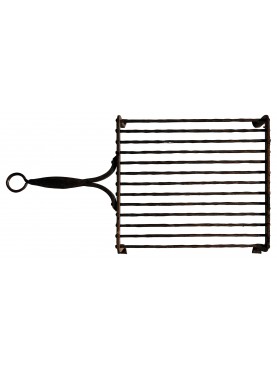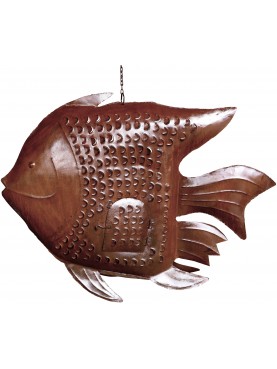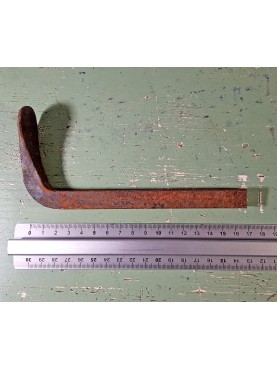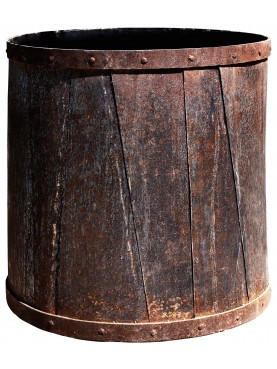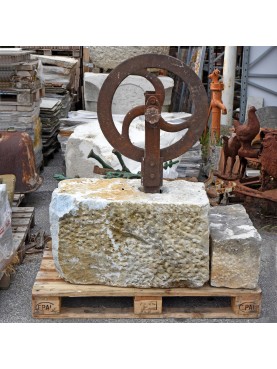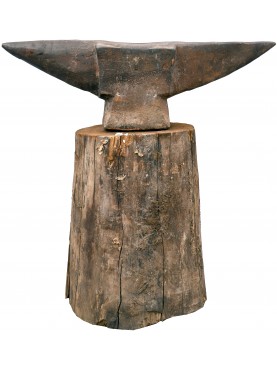Antique Admiralty Stock Anchor H 89 cm
Antique Admiralty Stock Anchor H 89 cm
14980
Original
Ancient admiralty anchor, stock anchor.
Measures:
from bill to bill 77 cm
from crown to head 89 cm
length of the stock 84 cm
weight 40 kg
1 Available
Warning: Last item in stock!
Data sheet
| Weight | 88.18 lbs | 40 Kg |
| Ancient manufacturing source | Italy | |
| Material | Iron |
More info
The Admiralty Pattern, "A.P.", or simply "Admiralty", and also known as "Fisherman", is the anchor shape most familiar to non-sailors. It consists of a central shank with a ring or shackle for attaching the rode. At the other end of the shank there are two arms, carrying the flukes, while the stock is mounted to the other end, at ninety degrees to the arms. When the anchor lands on the bottom, it will generally fall over with the arms parallel to the seabed. As a strain comes onto the rode, the stock will dig into the bottom, canting the anchor until one of the flukes catches and digs into the bottom.
This basic design remained unchanged for centuries, with the most significant changes being to the overall proportions, and a move from stocks made of wood to iron stocks in the late 1830s and early 1840s. Since one fluke always protrudes up from the set anchor, there is a great tendency of the rode to foul the anchor as the vessel swings due to wind or current shifts. When this happens, the anchor may be pulled out of the bottom, and in some cases may need to be hauled up to be re-set. In the mid-19th century, numerous modifications were attempted to alleviate these problems, as well as improve holding power, including one-armed mooring anchors. The most successful of these patent anchors, the Trotman Anchor, introduced a pivot whence the arms join the shank, allowing the "idle" arm to fold against the shank.
Handling and storage of these anchors requires special equipment and procedures. Once the anchor is hauled up to the hawsepipe, the ring end is hoisted up to the end of a timber projecting from the bow known as the cathead. The crown of the anchor is then hauled up with a heavy tackle until one fluke can be hooked over the rail. This is known as "catting and fishing" the anchor. Before dropping the anchor, the fishing process is reversed, and the anchor is dropped from the end of the cathead.
Source Wikipedia

